All marketing has three core elements:
- Content: This is the medium your message takes. Examples include print ads, TV commercials, digital ads, blog posts, videos, flyers in the mail, social media posts, emails, speeches and more. In the realm of online advertising, content can include display ads and video ads that engage audiences on various platforms.
- Marketing channel: This is the platform where you share the message. Examples include magazines, webpages, search engines, social networks, email and more.
- A marketing strategy: The blueprint. The premeditation of what you want to say, why you want to say it, how you want to say it, to whom, when, on what marketing channels and with what types of content. A well-crafted advertising strategy is essential for a successful ad campaign.
What is Marketing and Advertising?
Advertising is what comes to mind for most people when they think about marketing: TV ads, YouTube ads, a print ad in a magazine, an ad during a podcast, billboards on the highway and digital banner ads on a website. These are all examples of advertising and, subsequently, marketing. Whether it’s a display ad on a website or a social media ad, advertising media is diverse and continually evolving.
The Marketing Mix
The traditional marketing mix is made up of four key components:
- Product.
- Price.
- Place.
- Promotion.
These are generally considered the essential elements of modern marketing and are fairly self-explanatory: What are you selling? How much does it cost? How are you distributing it? How are you advertising it?
More recently, you may come across an updated marketing mix that includes three new P’s that are a bit more relevant to the services side of marketing:
- People: In the context of services, “people” refers to the employees, their training and their interactions with customers, contributing to the overall customer experience.
- Process: This P involves the procedures, systems and methods used to deliver a product or service. An efficient and smooth process contributes to customer satisfaction. One of the most impactful ways to streamline this process is by utilizing advanced tools such as demand planning software, which helps businesses forecast demand, optimize inventory levels and improve overall supply chain efficiency. This ensures that the right products are available at the right time, significantly enhancing customer satisfaction.
- Physical evidence: In marketing, physical evidence refers to the tangible cues that help customers know that your business is, in fact, real or that a purchase actually took place. This could include a physical store or office, digital proof of purchase and more.
Think of advertising as an imposition on your attention. Ads kind of follow you around and actively try to get you to notice them. That’s why advertising is often called “interruption marketing”. To avoid these interruptions, you might find yourself taking evasive measures — like hitting the fast-forward button on a podcast, hovering over the “skip ad” button on a YouTube video, ready to click or using an adblocker while browsing the web.
So why advertise?
Because it helps increase brand awareness and can be useful to target an audience that has already shown interest in your brand (that’s why you might see banner ads for boots on various websites after you’ve been shopping for them). Display advertising, for instance, allows marketers to re-target consumers through visual online ads across various websites.
The downside of advertising is that it’s sure to cost you every time you get your content in front of an audience (e.g., a Google ad). In this sense, an advertising campaign may be less cost-effective than a well-executed organic content marketing effort, like search engine optimization. However, marketers often allocate a fraction of their total budget to advertising to capture time-sensitive traffic with ad formats such as search ads and display ads.
A Few Terms To Be Familiar With First
- Inbound marketing: Involves creating solutions or content that is non-interruptive. The goal is to draw customers into engagements with your brand through organic means, such as creating a blog that provides tips and tricks.
- Outbound marketing: Also known as interruptive marketing (or push marketing), this is all about actively reaching out to customers to make them aware of your product or service.
16 Types of Advertising
Like music notes, the number of ways those 3 elements can play out is nearly endless. There are so many types of product advertising born from these basic components — definitely more than can fit in a listicle.
But if we had to pick the 16 greatest hits of our time, this is what they would be:
- Word-of-Mouth Marketing
- Video Marketing
- Stealth Marketing
- Content Marketing
- Search Engine Marketing
- Social Media Advertising
- Call-to-Action Marketing
- Direct Marketing
- Account-Based Marketing
- Guerilla Marketing
- Marketing Automation
- Public Relations
- Event Marketing
- Affiliate Marketing
- Influencer Marketing
- Relationship Marketing
Let’s take a deeper dive into what each is all about.

1. Word-of-Mouth Marketing
Word-of-mouth marketing (WOMM) is the oldest and most reliable form of advertising. In essence, it’s like a recommendation passed between friends. Despite the rise of online advertising and sophisticated marketing communication strategies, WOMM remains a powerful factor for any advertising campaign.
Word of mouth works by providing a great product or service, which leads to satisfied customers who become brand advocates by sharing their positive experiences with others. This historically happened through casual conversations and has evolved to include channels like social media, review sections and other means of digital or physical communication.
Word-of-mouth marketing is powerful because people tend to trust recommendations from friends, family or peers more than advertisers themselves. Essentially, WOMM is the ripple effect of happy customers spreading a positive word about a product or service.
2. Video Marketing
If you’ve ever watched a YouTube video, you’ve probably seen an ad played either before, during or after the video you clicked on. This form of advertising is similar to traditional TV ads but generally much briefer. Video marketing today accomplishes the same task, though: Each ad tells a story that promotes a product or service. YouTube promotion has become a powerful tool for businesses, allowing them to reach their target audience through engaging video ads on the platform.
Video ads aren’t limited to YouTube. They can be placed (almost) anywhere that allows or is capable of hosting media, such as your own website and most social media platforms. Platforms like Facebook and Instagram offer opportunities for businesses to share video advertising content directly with users through social media ads.
3. Stealth Marketing
Stealth marketing is similar to how a ninja might approach advertising — it’s subtle and often goes unnoticed. Sometimes known as undercover or buzz marketing, this tactic involves promoting a product or service without explicitly disclosing that it’s a form of advertising.
The idea is to create a buzz or generate interest in a way that feels organic and not like a traditional marketing ploy. This could involve seeding products with influential individuals, creating mysterious or intriguing online content or integrating products seamlessly into entertainment media (like product placement). The goal is to spark curiosity and conversation without overtly saying, “Hey, this is an ad!” It’s a bit like planting a seed and letting it grow naturally in the minds of the audience.
4. Content Marketing
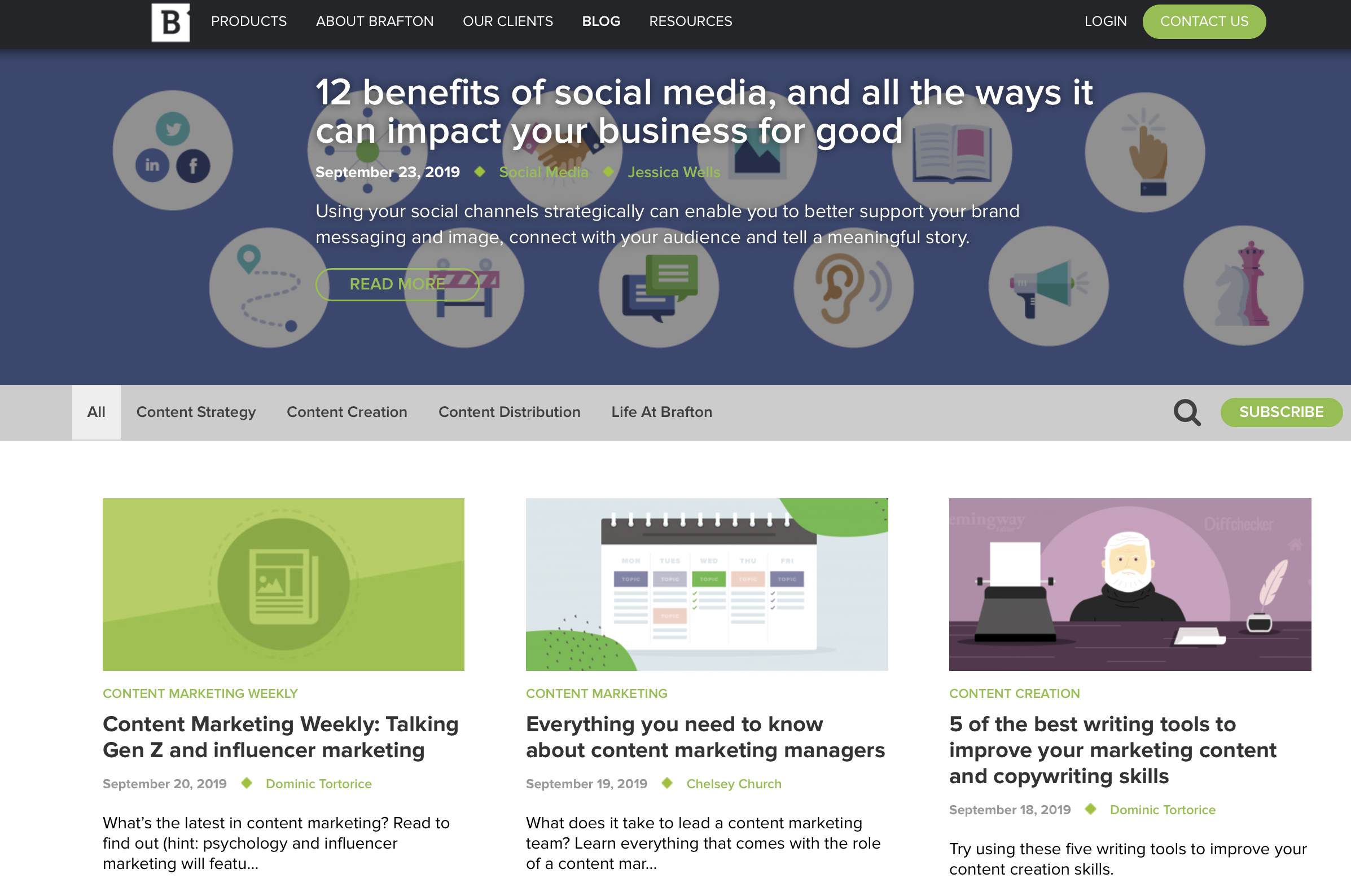
Unlike traditional advertising, the purpose of content marketing is to create content that’s so valuable to a target audience that they’ll either actively seek it out or be served it upon searching for related topics on Google.
That’s why people often conflate content marketing and search engine optimization (SEO), even though, technically, they’re a little different.
Content marketing is the development of original and high-quality content that a target audience will find useful and that isn’t overly promotional. This includes assets such as:
- Blog posts.
- Podcasts.
- How-to-videos.
- Original research.
- Infographics.
- eBooks.
- White papers.
- Free online tools.
- Other non-interruptive marketing efforts.
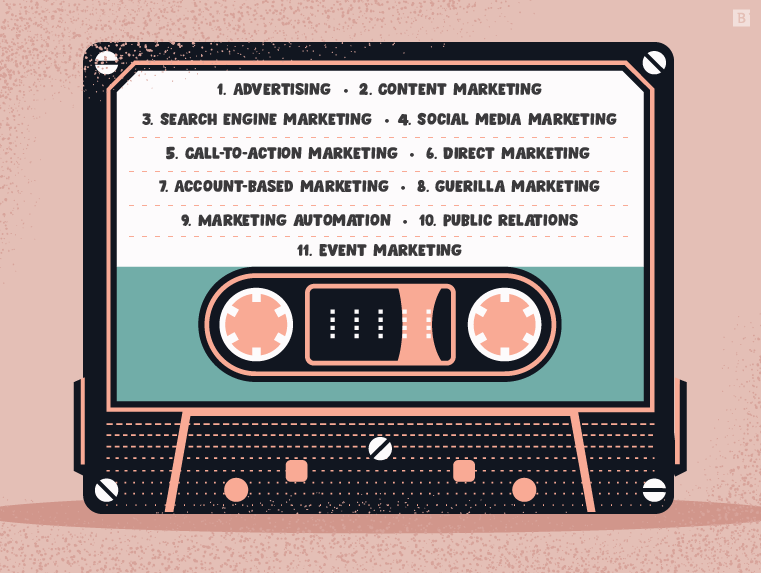
On the other hand, SEO is about making this content more discoverable on search engines: It improves the odds that your target audience will discover your web pages when they search for questions and information that your brand has answered through digital content.
Content marketing and SEO both fall under the umbrella of digital marketing, the core benefit of which is that it gets people on your website where you can further engage them. For instance, by encouraging users to sign up for your newsletter or to download additional resources in exchange for an email address.
Great content also gives other sites something to link back to, which can help improve your site ranking.
In the competitive world of online advertising, high-quality content sets you apart. And content is the cornerstone of any digital marketing strategy.
Subscribe to
The Content Marketer
Get weekly insights, advice and opinions about all things digital marketing.
Thank you for subscribing to The Content Marketer!
5. Search Engine Marketing
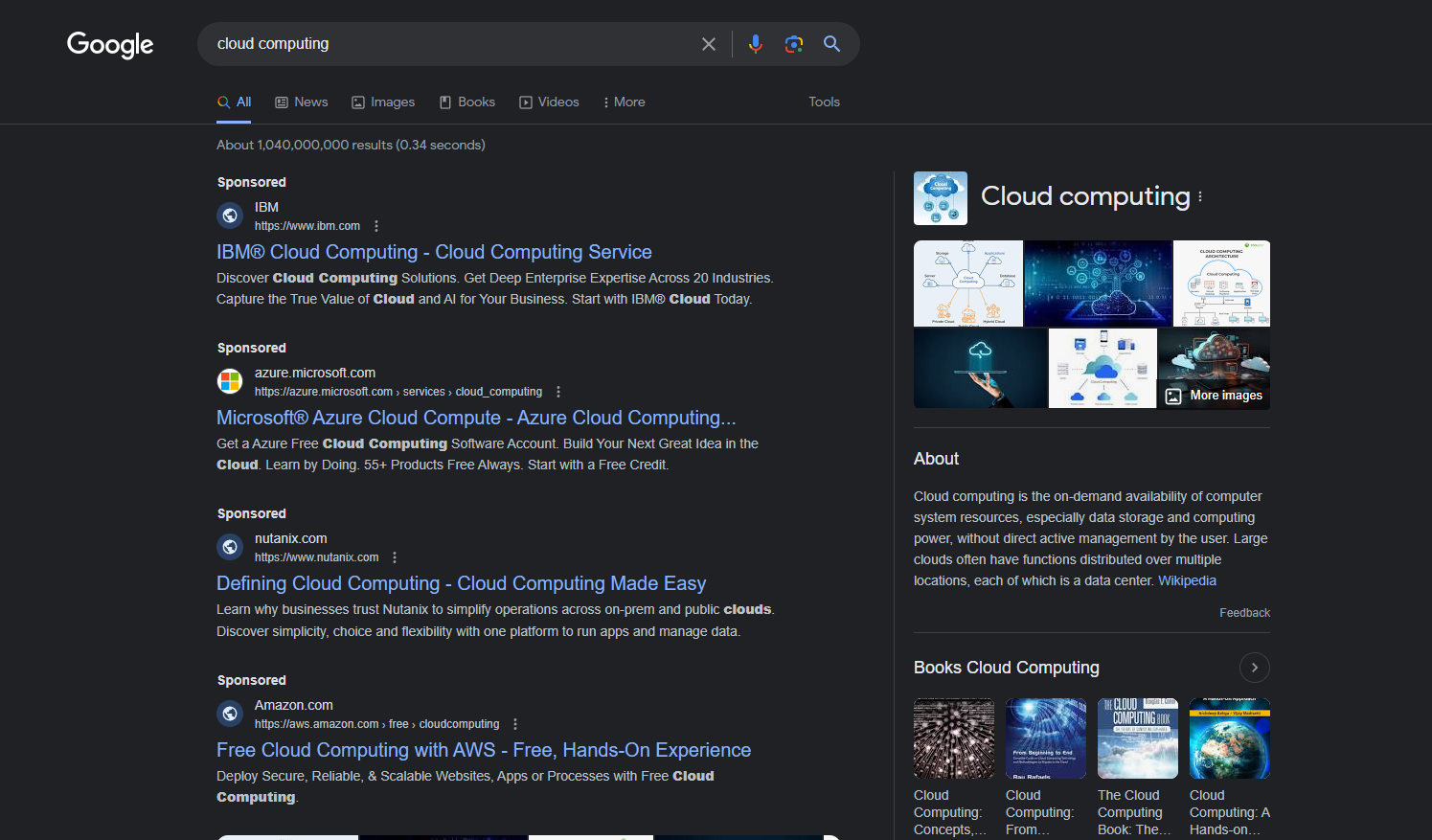
Think of search engine marketing (SEM) as the paid version of content marketing. It mostly consists of pay-per-click (PPC) advertising using Google Ads.
The basic idea is that businesses pay Google a certain dollar amount each time someone clicks on a paid search result. Those paid search results are clearly labeled as sponsorships, which means that they tend to be clicked on less than organic results (results that do not say “Sponsored” next to them).
The thing to remember about SEM is that you need content on the other end of every banner ad and paid search result. As such, SEM is most valuable as a supplement to a larger content marketing strategy.
At a high level, SEM is just one type of digital advertising. Other ways to advertise on the web include:
- Social media ads.
- Ad distribution networks that post a banner on relevant sites.
- Display advertising through Google Display Ads, which are visual online ads that appear on websites within Google’s Display Network.
6. Social Media Marketing
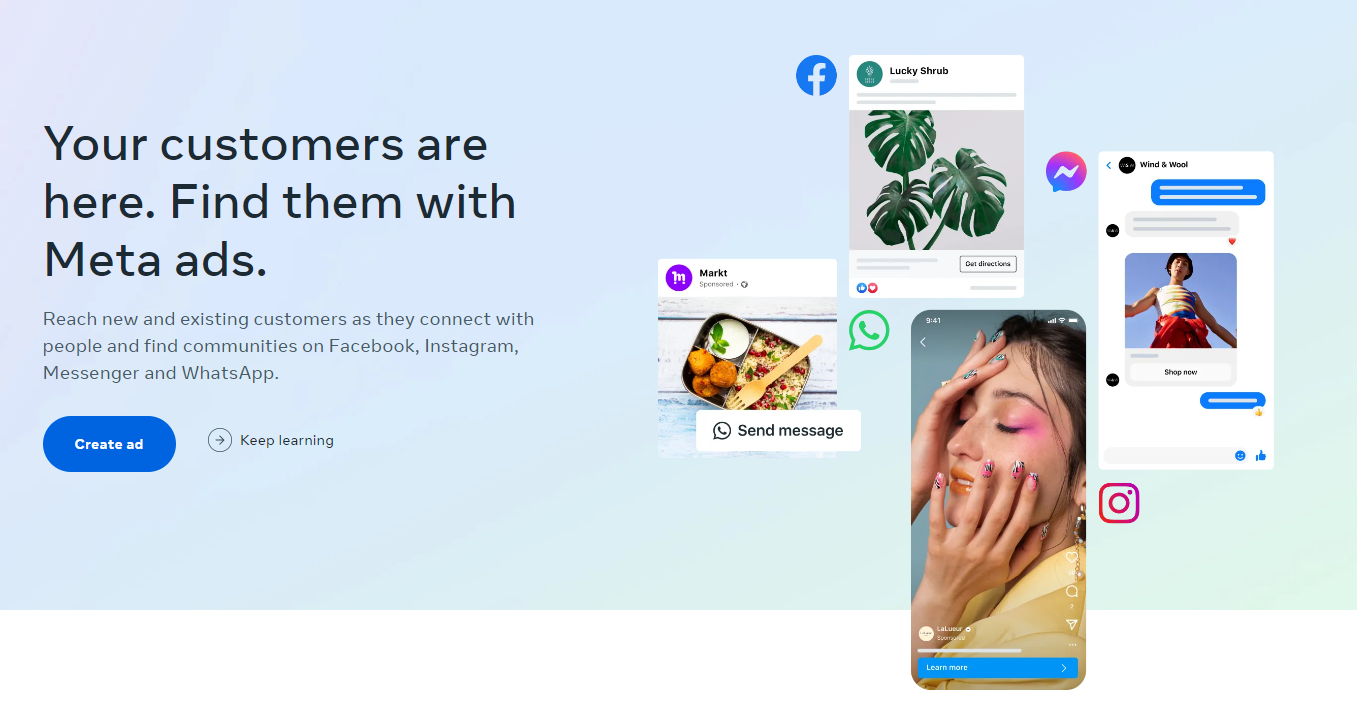
Social media advertising is exactly what it sounds like: using social media platforms to distribute unpaid content.
The benefits of social media channels include:
- Audience size: Billions of people are on social media.
- Cost-effectiveness: You can promote your brand and its content for free on social media.
- Engagement: You can turn satisfied customers into brand advocates on social media with user-generated content campaigns (think of this as a cost-effective form of influencer marketing where you encourage positive interactions with your brand on social networks).
- Targeted marketing: There are many social media channels, and you can focus your attention more on the ones that matter most to your target market (Gen Z loves Snapchat and TikTok, for instance), utilizing social ads tailored to specific demographics.
Under the umbrella of social media advertising, there’s also viral marketing and interactive marketing. These sub-disciplines use a social media platform to amplify a brand’s ideas, actively engage followers and generate differentiation from more traditional forms of marketing material (like static images or snippets of text).
Social media is especially fond of native advertising — meaning ads that “blend in” with their surroundings to mimic real posts. Sometimes, the only way to tell native ads from real posts is to look somewhere around it for something that specifies it as an ad. Somewhere on the post will be displayed something like “advertisement,” “sponsored” or “promotion.”
7. Call-to-Action Marketing
A call to action (CTA) is a prompt to get anyone reading your content to take a desired action. These CTAs can live on your homepage, be embedded in a blog post or the end of an email, included in a social media post, text blasts, etc.
They typically use action language, like:
- Find out how.
- Get your free quote.
- Discover more savings.
- Take the virtual tour.
- Sign up for a free consultation.
- Subscribe.
- Download the eBook.
You can present them as buttons that live in fixed parts of your site – like so:
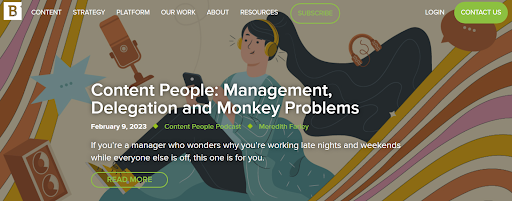
They can be form fields on the landing page of downloadable marketing collateral:
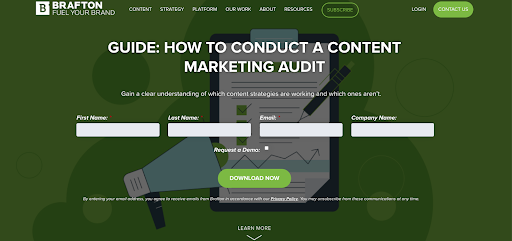
Or they can be scroll-activated pop-up boxes:

You can even include CTAs in your blog copy as anchor text.
The goal is to get a user to take action, like providing an email in exchange for reading an eBook or a white paper.
That action should lead to deeper engagement with your brand. By capturing an email, for instance, you put that lead on a track for email marketing efforts.
In this sense, CTA marketing is a critical component of inbound marketing strategies where the goal is to lead users deeper into the sales funnel and prime the pump for a conversation.
Optimizing CTAs for maximum impact requires market research and A/B testing to ensure readers are performing desired actions — it’s a recurring activity that evolves with every marketing campaign, page and audience.
8. Direct Marketing
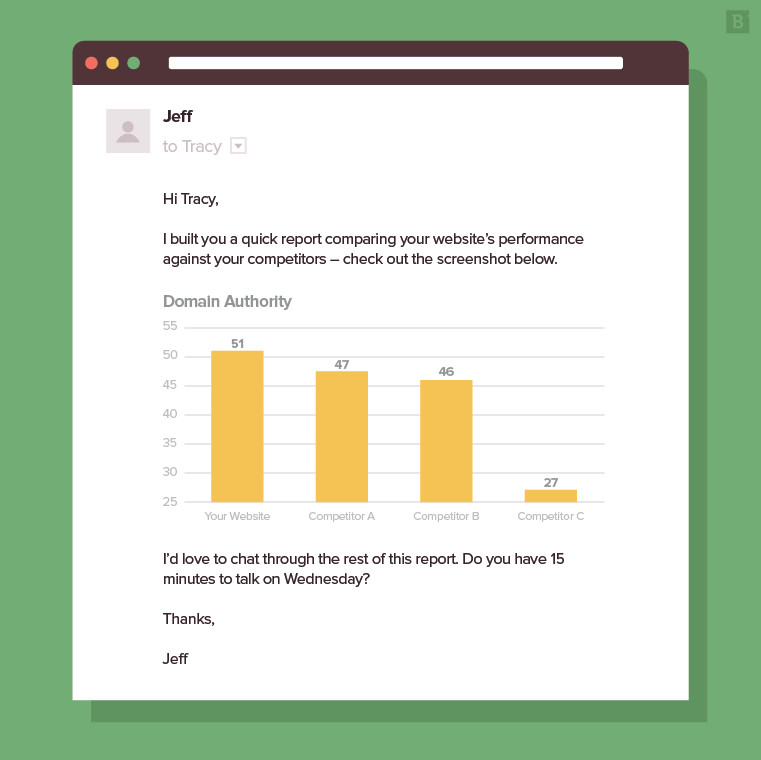
Direct marketing, sometimes called one-on-one marketing, is a direct proposal. It can be a proposal for a trial or, in the case of the example above, just a conversation.
Technically, direct marketing falls under the umbrella of outbound marketing. Tracy, for instance, might be a regular reader of the Brafton newsletter, but she didn’t log onto her email that morning expecting to receive a personalized analysis of her site’s domain authority followed by a request for a call. It may be a little more, say, direct than she’s used to.
Nevertheless, direct marketing has its place in inbound marketing. It’s possible, for instance, that Tracy downloaded, say, an eBook we wrote about building domain authority. In that case, she’s an inbound lead who has been primed, making her an ideal prospective customer for a more direct approach.
Other examples of direct marketing are in the mail – like those “you’re pre-approved” credit card offers, and cold calling a list of leads.
In a vacuum, direct marketing comes across as aggressive and spammy. But when well-timed as part of a bigger marketing plan, it can be the push that gets a prospect to become a customer.
9. Account-Based Marketing
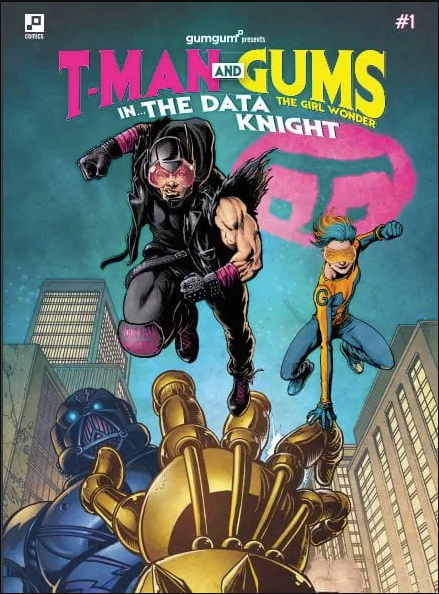
Account-based marketing is simply any marketing campaign that targets specific accounts. In the example above, GumGum – a computer vision technology company – was trying to close a deal with T-Mobile. They were so invested that they hired a creative team to create a comic book inspired by the partnership of the two brands.
It’s incredibly unconventional, but it supposedly got the attention of T-Mobile’s CEO.
The gamble with account-based marketing is that it might not work. And if the campaign is too narrow in scope – say, like a comic book about T-Mobile – it runs the risk of being a wasted investment if the target ultimately gets away.
That’s why, when creating ABM campaigns, it’s always better to base them around personas as opposed to one specific customer. You can reuse that content if it isn’t overly specific.
ABM is becoming a gold standard in B2B marketing, as brands aim to better leverage their personas and align with sales teams. As a marketing activity, ABM is very high-risk, high-reward, so it requires careful planning, strategic hands and full buy-in.
10. Guerilla Marketing
Guerilla marketing is just any type of unconventional marketing that’s meant to generate publicity for a brand. This can take many forms, but a few common examples include:
- Pop-up shops.
- Street art or other public art displays.
- Flash mobs.
- OOH advertising (Out-of-Home advertising) such as creative billboards and installations in public spaces.
Generally speaking, the more unexpected and surprising the tactic, the better. At its best, guerilla marketing inspires people to take to social media and gets bloggers, magazines and news outlets talking about the crazy-cool thing your brand did.
Guerilla marketing is not to be confused with experiential marketing. They’re similar in that they tend to be highly creative and attention-grabbing. However, the latter is a little more experience-oriented.
11. Marketing Automation

Marketing automation is basically the practice of automating certain marketing tasks. An example is the automated email we send out to users who sign up for our newsletter.
Popular in both B2B and B2C marketing, a marketing automation platform can improve segmentation (creating lists of recipients) by programming certain messages to send out to certain leads at a very particular time and day.
Marketing automation was made for email marketing and digital advertising.
The idea is that certain content is sent to or displayed for certain users based on their content consumption habits. Said habits are recorded within a tool like Pardot or Marketo. Ideally, you’ll know exactly what post the email contact was reading when they first gave you their information, and what, if any, marketing collateral they’ve downloaded since then. With content and email sends that are more personalized to each user, automation helps deliver better customer experience for new and existing customers alike.
An email drip campaign is a good example of marketing automation. The contents of each message are based entirely on the recipient’s interaction with the previous message. This ensures that the next message a recipient sees is the message that is most likely to get them engaging with your brand.
If you have any aspirations of launching an email marketing campaign and improving the precision of your interactions with leads as you go deeper into the sales funnel, you’re going to need marketing automation resources.
12. Public Relations
Public relations is any attempt by a brand to maintain a favorable image for its audiences regardless of what might be happening.
Public relations isn’t reserved just for the big companies, though.
Small businesses also need PR. For instance, how they communicate with their customers and their business partners following a data breach is important to their recovery as an organization.
And PR doesn’t necessarily have to follow a disaster. Highlighting your charitable undertakings in a blog post is an opportunity to earn some positive publicity. So is attending local events in the community and publishing a press release when your brand is recognized by an industry magazine.
Anything you can do (within your means) to earn positive media attention will ultimately help your brand. In this way, PR is really brand marketing, as it’s focused solely on the awareness, credibility and reach of the brand.
13. Event Marketing

Event marketing is all the marketing and promotion efforts you take before, during and after an event.
Maybe it’s an event you’re hosting, like an industry conference, a lunch-and-learn or even a live webinar. When done right, a well-executed event is in and of itself a form of marketing — but you still need to generate interest beforehand.
Start by creating a landing page for that event and promoting it on your blog, through social media channels and via email ads.
Also, consider live-tweeting or posting on other social channels. Once it’s over, create a blog post (or multiple posts) summarizing some highlights.
The same applies if you’re participating in someone else’s event or partaking in a well-known industry conference and want to make sure people know you’ll be there.
You don’t necessarily have to be giving a keynote speech, either. Even if you’re just going to learn and network, share your experiences with other people on your blog and through social media. It also helps to have something to hand out during the event. These could be limited-time promos and coupons, company swag boxes, a brochure or — at the very least — a simple business card. For example, if you’re attending a music festival, you could create a concert flyer with information about your band, upcoming shows, and social media handles.
14. Affiliate Marketing
Affiliate marketing is like a digital matchmaking service for businesses. Companies team up with individuals or other businesses (the affiliates) to promote their products or services.
Unique to this type of marketing, affiliates earn a commission for every sale, click or lead generated through their unique affiliate link. It’s a win-win situation: the company gets more exposure and potential customers, while the affiliate gets a piece of the profit for driving traffic or sales.
Affiliate marketing is common on a few different types of platforms, but some popular channels include:
- Blogs and websites: Affiliates often integrate their affiliate links into their blog content on their websites. They might write reviews, tutorials or other articles related to a company’s products.
- Social media: Social platforms are huge for affiliate marketing, where affiliates can leverage their followers and presence to promote products. This often happens via sponsored posts, stories or even live videos.
- Email marketing: Some affiliates build email lists and promote products to their subscribers.
- Podcasts: If you listen to podcasts, you’ve no doubt experienced affiliate marketing first-hand. Podcasters often integrate affiliate links into their show notes or promotional segments and earn commissions when listeners make purchases through those links or by entering a unique code at checkout.
15. Influencer Marketing
In a similar vein to affiliate marketing, influencer marketing is all about businesses partnering with individuals who have a significant following in a particular niche or industry. Influencers then create content to promote the brand’s products or services to their audience.
The idea is that the influencer’s endorsement carries weight with their followers, leading to increased brand awareness, trust and, ultimately, sales. It’s a modern and more personal approach to advertising, leveraging the perceived authenticity of an influencer and their connection with their audience.
16. Relationship Marketing
Relationship marketing is like building a long-lasting friendship with your customers. It’s all about creating and maintaining strong connections.
Instead of focusing solely on one-time transactions and sales in general, relationship marketing emphasizes fostering loyalty and engagement over the long term.
This approach involves everything from personalized communication, robust and responsive customer support, loyalty programs and other strategies to make customers feel valued and understood.
The goal here is to build trust and an emotional connection with each individual, turning one-time buyers into repeat customers and brand advocates.
Did We Snub Your One of Your Favorite Types of Marketing?
It’s possible that we glazed over or completely missed your favorite type of marketing. After all, there are entire books about marketing strategies. But, hopefully, this was a good primer as you wade deeper into the world of advertising.
And marketing is ever-changing. This is a truth those in the industry know all too well. What works great today may start to fade tomorrow with the introduction of new tech, software platforms or any number of variables. From display ads on the web to mobile advertising that reaches users on their smartphones through app ads, the landscape is constantly shifting.
But for now, this is what we know!
Editor’s Note: Updated December 2024.








